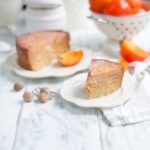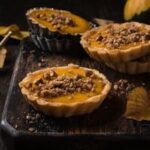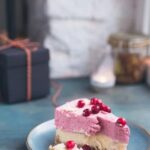What’s the best icing for decorating cakes? Choosing the right icing is crucial for achieving the perfect look and taste for your decorated cakes. Whether you’re a beginner or a professional baker, selecting the right type of icing can make a significant difference in the outcome of your cake decorating.
With various options available, each serving different purposes and providing unique characteristics, it’s important to understand the differences between buttercream, royal icing, fondant, cream cheese frosting, and ganache. Each type of icing offers its own set of advantages and challenges when it comes to cake decorating, so it’s essential to know which one best suits your needs.
In this article, we will explore the different types of icing for cake decorating and provide tips and tricks for successful cake decorating with each option. Whether you’re looking for a smooth finish, intricate designs, or a rich and luxurious topping for special occasions, there’s an ideal icing for every cake decorating project.
Buttercream
One of the benefits of using buttercream icing is its versatility. It can be easily tinted with food coloring to achieve a wide range of colors for decorating cakes. Additionally, buttercream can hold its shape well when piped into various designs, making it ideal for creating borders, flowers, and other decorations on cakes. With its smooth consistency and ability to hold decorative elements well, buttercream allows beginners to experiment with different techniques and still achieve professional-looking results.
When using buttercream icing for cake decorating, it’s important to consider the temperature at which it is stored and used. Buttercream can become too soft in warm environments and melt if not properly handled.
To prevent this, it’s recommended to chill the cake briefly after applying a crumb coat of icing before adding additional layers or decorations. By mastering the basics of working with buttercream icing, beginners can gain confidence in their cake decorating skills while creating beautiful and delicious treats that are sure to impress.
Royal Icing
When it comes to intricate cake designs, royal icing is often the top choice for professional bakers and decorators. This type of icing is made from confectioners’ sugar, egg whites, and lemon juice or flavoring, giving it a smooth and glossy finish that is perfect for detailed decorations. Royal icing is versatile and can be used to create delicate lace-like patterns, intricate piping designs, and even 3D decorations on cakes.
Decorating Techniques
One of the reasons why royal icing is favored by professional cake decorators is its ability to hold its shape once piped onto a cake. This makes it ideal for creating lace patterns that can add an elegant touch to wedding cakes or other special occasion desserts. Furthermore, royal icing can be colored with food coloring to achieve vibrant hues for decorating cookies, gingerbread houses, and other sweet treats.
Tips for Working With Royal Icing
Working with royal icing requires some skill and practice, but there are a few tips that can help beginners achieve stunning results. It’s important to ensure that the consistency of the royal icing is just right – too thin and it won’t hold its shape, too thick and it will be difficult to pipe. Additionally, keeping your piping bag clean and using the right size piping tips can make a big difference in achieving precise decorations.
Best Uses for Royal Icing
Royal icing is not only versatile in terms of design possibilities but also in its use across different types of desserts. Aside from decorating cakes, cookies, cupcakes, and even petit fours can benefit from the use of royal icing. Its ability to dry quickly also makes it suitable for assembling gingerbread houses or adding decorative touches to holiday-themed treats.
Fondant
Creating Flawless Fondant Cakes
One of the key advantages of using fondant is its ability to create flawless cake designs. Its smooth texture allows for a seamless finish, making it ideal for wedding cakes, special occasion cakes, and sculpted cake designs. With proper kneading and rolling techniques, fondant can be draped over the cake to achieve a polished look that is difficult to achieve with other types of icing.
Embellishing With Fondant Details
Another benefit of using fondant is its versatility when it comes to embellishments. This icing can be used to create intricate decorations such as flowers, bows, ribbons, and even figurines. The pliability of fondant allows for detailed sculpting, making it an excellent choice for customizing cakes for any event or celebration. Whether you are looking to add a touch of elegance or whimsy to your cake design, fondant provides endless possibilities for creative expression.
Taking Your Cake Decorating Skills to the Next Level
For those looking to elevate their cake decorating skills and achieve a professional-grade finish, fondant is an essential tool in your arsenal. While it may require some practice to master working with fondant, the end result is well worth the effort. With patience and precision, you can create breathtaking works of art that will impress clients and guests alike.
Cream Cheese Frosting
When it comes to creating cream cheese frosting, the key is to use high-quality ingredients and ensure that they are at the right temperature before mixing. Here’s a simple recipe for cream cheese frosting:
Cream Cheese Frosting Recipe
- 8 oz cream cheese, softened
- 1/2 cup unsalted butter, softened
- 4 cups powdered sugar
- 1 tsp vanilla extract
To make the cream cheese frosting, simply beat the softened cream cheese and butter together until smooth. Gradually add in the powdered sugar and vanilla extract, beating until the mixture is light and fluffy. Once you have achieved the desired consistency, your cream cheese frosting is ready to be used for decorating your cakes.
When using cream cheese frosting for cake decorating, it’s important to keep in mind that this type of icing is best suited for refrigerated cakes due to its dairy content. Additionally, adding too much liquid or food coloring can affect the consistency of the frosting. However, when used correctly, cream cheese frosting can add a deliciously creamy and tangy element to your decadent cakes.
Ganache
When making ganache, it is important to use high-quality chocolate for the best flavor and texture. Bittersweet or dark chocolate is commonly used for ganache to balance the sweetness of the cake, but milk chocolate can also be used for a sweeter flavor profile. The ratio of chocolate to cream will determine the consistency of the ganache, with a higher chocolate ratio resulting in a firmer ganache that is better suited for frosting and piping.
One of the key advantages of using ganache for cake decorating is its versatility. It can be poured over the cake for a glossy finish, whipped into a fluffy frosting, or piped into intricate designs. Additionally, ganache can be flavored with extracts, liqueurs, or spices to complement the flavor of the cake. Whether you’re looking to create a classic chocolate ganache or experiment with different flavors like espresso or raspberry, ganache offers endless possibilities for customization.
Ganache is an excellent choice for both novice and experienced bakers alike who want to elevate their cakes with a decadent and sophisticated icing. The smooth and creamy texture of ganache provides an ideal canvas for creative decorations and designs, making it a go-to option for those looking to make a statement with their cake creations. Whether you’re working on a simple layer cake or an elaborate tiered masterpiece, ganache can elevate your cake decorating to new heights.
- Use high-quality chocolate
- Experiment with different flavors
- Ganache is versatile – use it as frosting or decor
Tips and Tricks for Successful Cake Decorating With Different Icing
When it comes to decorating cakes, choosing the right icing is crucial in achieving the desired look and taste. Each type of icing has its own unique qualities that make it suitable for different cake decorating needs. Whether you’re a beginner or a professional baker, there are various tips and tricks that can help you successfully decorate your cakes with different types of icing.
One important tip for successful cake decorating with different icing is to consider the consistency of the icing. For example, buttercream icing is best used for piping borders and creating textured designs because of its smooth and creamy consistency. On the other hand, royal icing, which hardens when dry, is ideal for intricate designs such as lace work and delicate details.
Another essential tip is to practice proper handling and storage of the icing. For instance, fondant should be kneaded and rolled out on a clean surface dusted with powdered sugar to prevent sticking. It’s also important to keep unused fondant wrapped tightly to prevent it from drying out. Understanding how to properly handle and store each type of icing will ensure that it maintains its shape and texture for decorating purposes.
Furthermore, experimenting with different techniques and tools can also enhance your cake decorating skills with various types of icing. Whether it’s using different piping tips for buttercream or mastering the art of smoothing fondant with a fondant smoother, exploring new techniques can help you achieve professional-looking results on your cakes. Additionally, practicing these techniques will allow you to develop your own unique style when it comes to cake decorating.
| Tips & Tricks | Benefits |
|---|---|
| Consider the consistency of the icing | Ensures that each type of icing is used effectively based on its unique texture |
| Proper handling and storage | Maintains the quality and texture of the icing for successful cake decorating |
| Experimenting with different techniques & tools | Enhances cake decorating skills while developing a personal style |
Conclusion
In conclusion, the choice of icing for cake decorating ultimately depends on the specific needs and preferences of the baker. Each type of icing has its own unique qualities and is best suited for different types of cake designs and flavor profiles. Buttercream is ideal for beginners due to its ease of use, while royal icing offers versatility for intricate designs.
Fondant provides a smooth finish that is favored by professional bakers, while cream cheese frosting adds a creamy and tangy element to decadent cakes. For special occasions, ganache offers a rich and luxurious option that is sure to delight guests.
When determining the best icing for decorating cakes, it’s important to consider factors such as the level of intricacy in design desired, the flavor profile of the cake, and the overall aesthetic vision. Additionally, taking into account personal skill level and experience can also help in making an informed decision when choosing an icing.
By understanding the unique qualities of each type of icing and utilizing helpful tips and tricks for successful cake decorating, bakers can ensure that their cakes not only look beautiful but also taste delicious.
In essence, there is no one-size-fits-all answer to what’s the best icing for decorating cakes – rather, it’s about identifying the specific needs of each individual project and selecting an icing that aligns with those needs. With this approach in mind, bakers can confidently create stunning works of edible art that leave a lasting impression on all who indulge in their delectable creations.
Frequently Asked Questions
What Type of Icing Is Best for Cake Decorating?
The best type of icing for cake decorating is buttercream icing. It is easy to work with, versatile, and holds up well in various weather conditions. Buttercream also allows for smooth finishes and intricate designs.
What Kind of Icing Do Professionals Use?
Professionals often use Swiss meringue buttercream or Italian meringue buttercream for cake decorating. These types of icing have a smoother texture and are less sweet than traditional buttercream, providing a more elegant and refined finish to cakes.
What Is the Best Icing to Practice Cake Decorating?
For practicing cake decorating, it’s best to start with basic buttercream icing. Its forgiving nature allows beginners to experiment with different decorating techniques without the added pressure of using more complex icings. Buttercream also provides a good foundation for building skills in piping and frosting application.

Welcome to my blog about home and family. This blog is a place where I will share my thoughts, ideas, and experiences related to these important topics. I am a stay-at-home mom with two young children. I hope you enjoy reading it! and may find some helpful tips and ideas that will make your home and family life even better!





